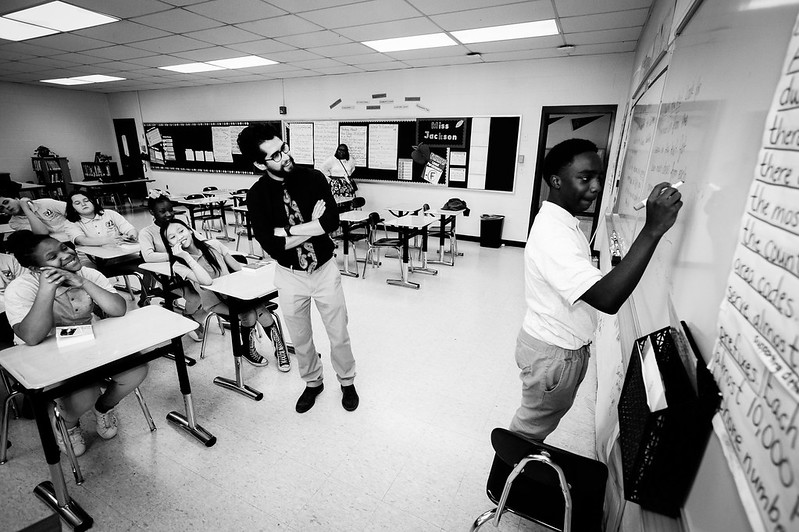GDPST students celebrate mid-year academic achievements

The return to in person classes to the Green Dot Public Schools in Tennessee brought in some exciting news as students in Middle Schools outperformed results from last year midterm iReady exams by double digits.
“This is probably the most promising IReady data that we’ve had in several years, so it’s making us feel quite confident in the changes we made both from a curriculum perspective but also from preparation, from assessment, from investing in students,”, said Jaime Hudgins, Green Dot Public Schools’ Chief Academic Officer in Tennessee. “I think that it appears that all size schools in Tennessee did a really good job thus far of having students know what their score was before they took the test in December.”
IReady assessments in English and Math are administered three times a year to students as a diagnostics tool. Assessments help instructors design lessons to suit the student’s needs and to determine how to best support their learning. iReady is designed to complement what is taught in the classrooms. Typical yearly student progress is 100%.
At Kirby Middle School, students met and surpassed their typical goals in both Reading and Math, at 251% and 178%, respectively. “Stretch” goal performance achieved in English came in at 105% and 75% in Math—meaning students achieved strong results even benchmarked against aggressive goals
Wooddale Middle School had similar success with a 245% typical growth in Reading and 173% in Math, while stretch goals in English came in at 104% and 74% in Math.
“The typical growth is the goal that you would expect in a school year. The stretch goal is the typical goal plus some,” explains Hudgins. “The stretch goal is really important for us because our students come in below grade level and so far behind their peers that in order for our students to close that achievement gap we need to see them hitting their stretch goals on consecutive years.”
At Kirby MS, 62% of the students achieved both goals, while at Wooddale, 67% of the students that took the assessment achieved those goals. Nationally, roughly 25%-35% of students have achieved these targets at the end of the academic year.
Teamwork is key
The growth the students achieved since the beginning of the school year is a combination of strong curriculum materials and well-prepared teachers and motivated students.
“Teachers have a better idea of what the overall picture of the lesson is and what the anvil of the lesson is and that they are able to better engage and motivate students in each lesson, and so you are seeing students being challenged more, teachers are asking better questions as students are able to have deeper and richer conversations with each other and with their teachers”, adds Hudgins.
While there was a unified strategy in place, teachers and principals in both schools adapted it to their unique necessities, motivating students to take the tests as a participation of more than 15% is needed in order to reflect the validity of the assessments.
“All of the schools did things slightly different, but I think it all can be placed under a bucket of incentives and understanding,” said Hudgins. “I worked with principals… we had all the principals meeting monthly leading to the iReady test where they were thinking about what are the plans we need to put in place so they would be able to get students to do as well as they can and get as many students participating as possible”.
At Kirby Middle School, students were running around with little pieces of paper saying, ‘this is my goal, this is my goal’. Students really understood what the test were, what they meant and why is important for them to do well but also what it means to them long term relative to their academic goals.
At GDPST, the three high schools in the network also did well. At Fairley High school, 334% of the typical goals in English were met, an achievement that included 73% of the students taking the test. They also had a 171% typical growth in Math, with 52% of students achieving that goal.
Since the 2018-2019 school year, the percentage of all students in GDPST meeting their Typical Growth Goal has increased, reaching 59% in Reading and 54% in Math.
